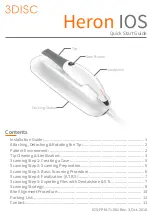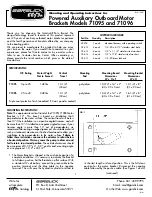
Document Reference: ENG-UMAN-000730
Revision: 6.00
Page 23 of 40
Note:
All explanted components should be returned to Saluda Medical for analysis. Refer to
Saluda Contacts in the Contact Us section of this document (see Section 17 ‘Contact us’).
Open the component sites
1.
Turn stimulation off using the patient’s EPC.
2.
Surgically open the lead or CLS pocket sites as required.
Warning:
Do not use electrosurgical techniques, such as electrocautery, over the
leads or CLS as this may cause tissue damage at the lead site and result in severe
injury or cause damage to the CLS.
Caution:
Take care with surgical instruments to ensure the leads and CLS are not
damaged.
3.
Cut any sutures and loosen setscrews with the torque wrench supplied in the kit as
required to allow components to be moved.
4.
Disconnect leads and CLS as required.
Percutaneous leads
1.
If repositioning the lead:
a.
Insert a stylet into the lead.
b.
Guide the lead to the required position (refer to sections 5.2.3 to 5.2.4).
Note:
If intra-operative testing via paresthesia generation is to be performed, go to
section 10 ‘Intra-Operative Testing’.
c.
Anchor the lead (refer to section 6 ‘Anchor the lead’).
d.
Tunnel the lead then connect to the CLS (refer to sections 7.2 to 7.3).
2.
If replacing the lead:
a.
Insert the epidural needle over the existing lead into the epidural space,
withdraw the existing lead.
b.
Insert the new lead (refer to sections 5.2.2 to 5.2.4).
Note:
For intra-operative testing methods, go to section 10 ‘Intra-Operative Testing’.
c.
Anchor the lead (refer to section 6 ‘Anchor the lead’).
d.
Tunnel the lead then connect to the CLS (refer to sections 7.2 to 7.2.3).
CLS
1.
For CLS replacement, remove the existing CLS and connect the new CLS to the
percutaneous lead (refer to sections 7.2.3 to 7.3).
2.
To move the existing CLS to a new site, create a new pocket and tunnel the
percutaneous leads to the new pocket, connect and anchor the CLS, clean and dress
the incisions (refer to sections 7.1 to 7.3).
















































